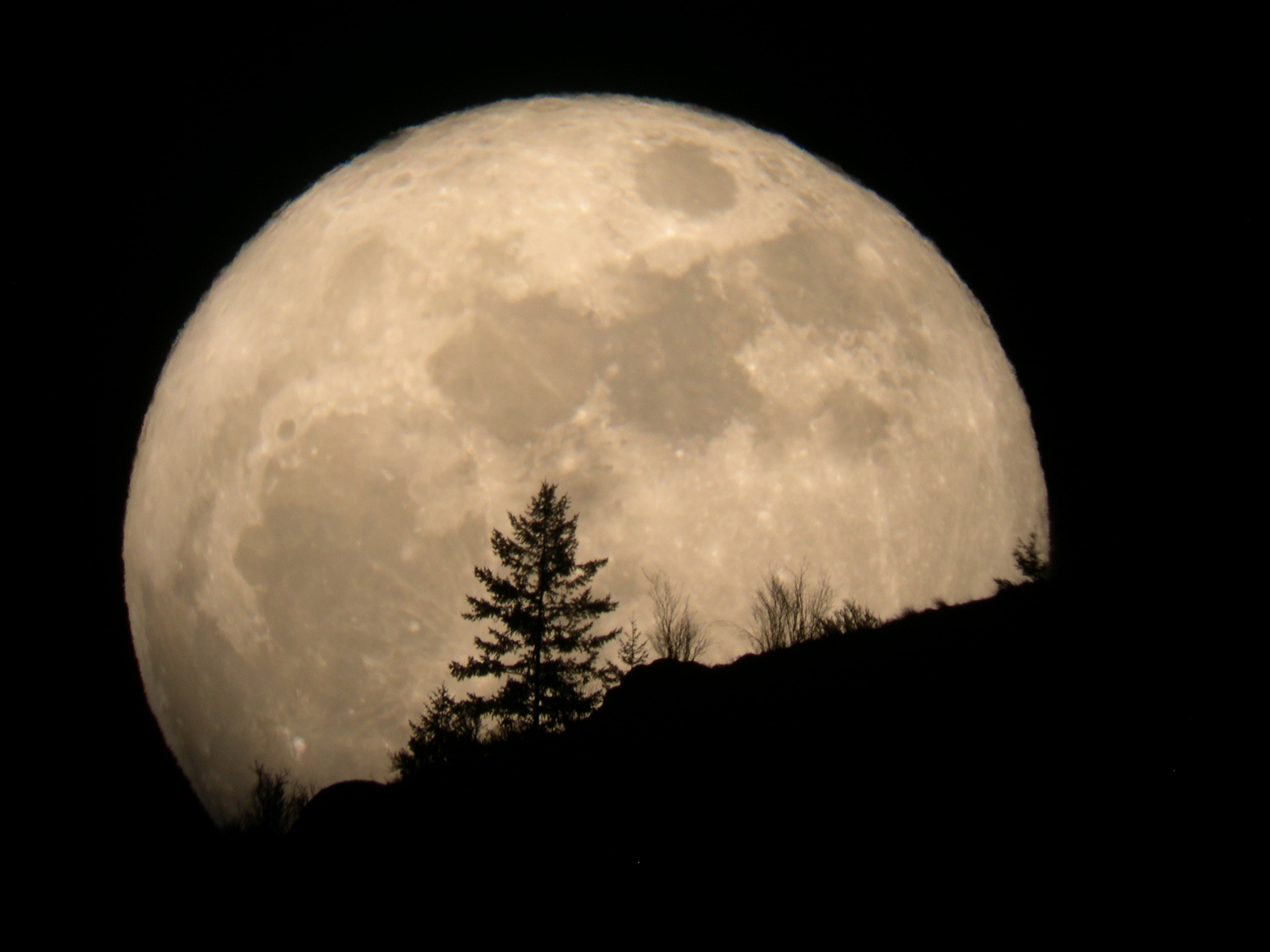Why the 'Supermoon' Will Look Largest Near the Horizon

Be sure to catch the "supermoon" Saturday evening (May 5) just as it rises in the east around sunset. For reasons still unknown to science, the moon appears much larger and more magnificent when it is near the horizon than when it is soaring overhead, despite the fact that the moon's size never actually changes.
This trick of the brain, known as the "moon illusion," has been contemplated since ancient times and continues to baffle scientists.
One possible explanation holds that we're used to seeing clouds just a few miles above us, but we also know that clouds on the horizon can be tens of miles distant. If a cloud on the horizon appears the same size as a cloud overhead, we can infer that the cloud on the horizon, because of its greater distance from us, must be huge. And because the moon near the horizon is the same size as it normally is overhead, our brains automatically tack on a similar enlargement. [5 Moon Mysteries to Ponder During Saturday's Supermoon]
But not everyone thinks clouds have worked their magic on our brains to such a great extent. There are a few alternative hypotheses; one holds that the moon seems bigger near the horizon because we can compare its size to nearby trees and other objects on Earth — and it looms large in comparison. Overhead, amid the vast expanse of outer space, our lone satellite seems diminutive.
Either way, the illusion will work wonders on Saturday's "supermoon," when the full moon coincides with lunar perigee, or the point in the moon's orbit when it swings closest to Earth. "On May 5th, this 'moon illusion' will amplify a full Moon that's extra-big to begin with," NASA stated in a press release. "The swollen orb rising in the east at sunset will seem super indeed."
If you aren't convinced that it's just a brain error, try spanning the moon with your thumb and forefinger when it's hanging low and when it's flying high; the gap between your fingertips won't change.
Follow Natalie Wolchover on Twitter @nattyover. Follow Life's Little Mysteries on Twitter @llmysteries, then join us on Facebook.
Get the world’s most fascinating discoveries delivered straight to your inbox.
Natalie Wolchover was a staff writer for Live Science from 2010 to 2012 and is currently a senior physics writer and editor for Quanta Magazine. She holds a bachelor's degree in physics from Tufts University and has studied physics at the University of California, Berkeley. Along with the staff of Quanta, Wolchover won the 2022 Pulitzer Prize for explanatory writing for her work on the building of the James Webb Space Telescope. Her work has also appeared in the The Best American Science and Nature Writing and The Best Writing on Mathematics, Nature, The New Yorker and Popular Science. She was the 2016 winner of the Evert Clark/Seth Payne Award, an annual prize for young science journalists, as well as the winner of the 2017 Science Communication Award for the American Institute of Physics.



